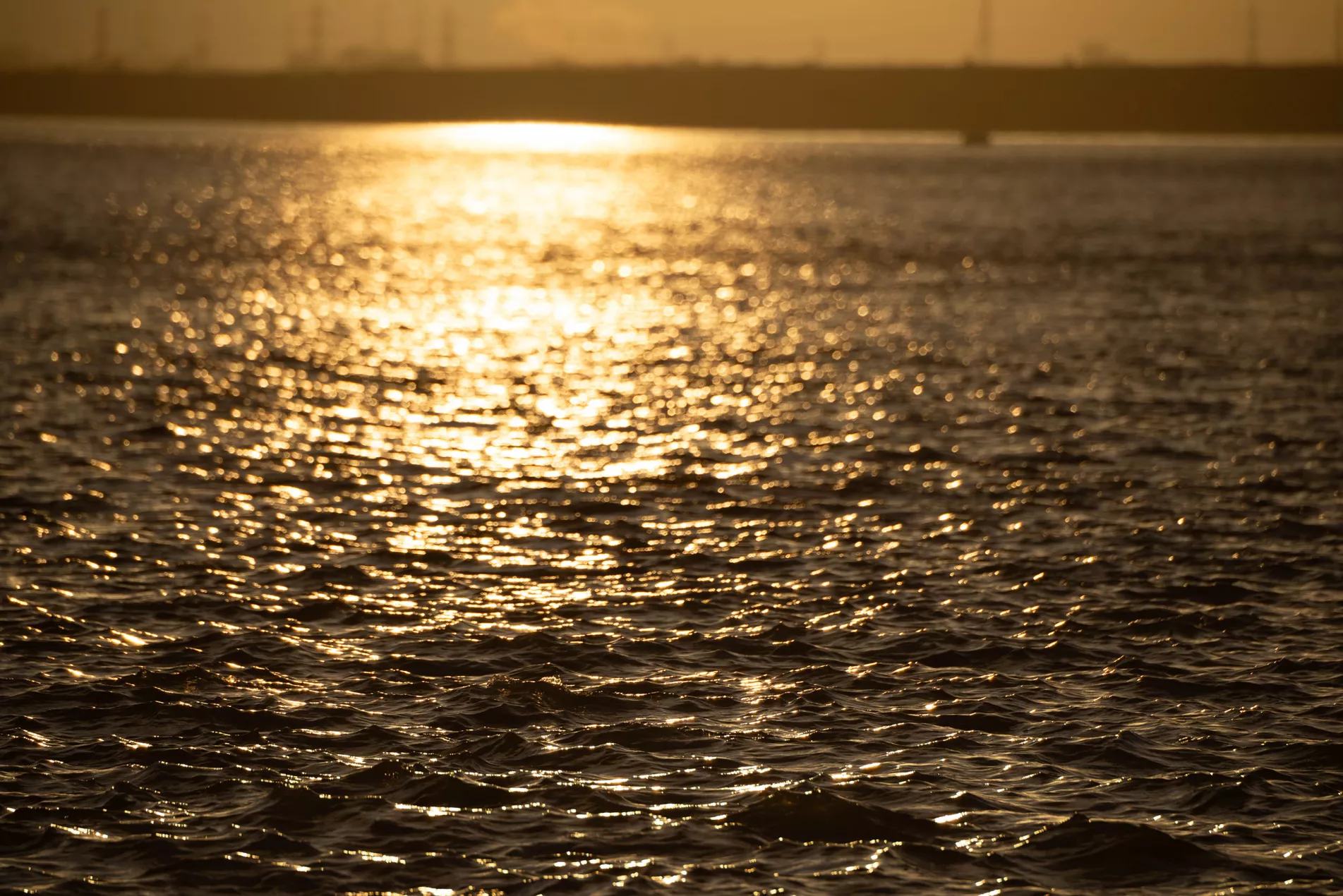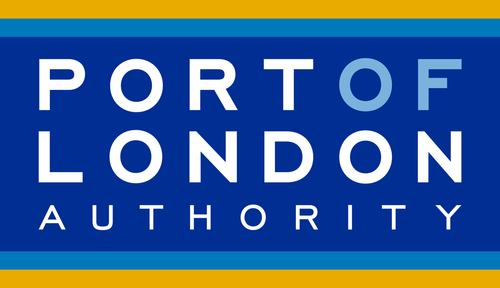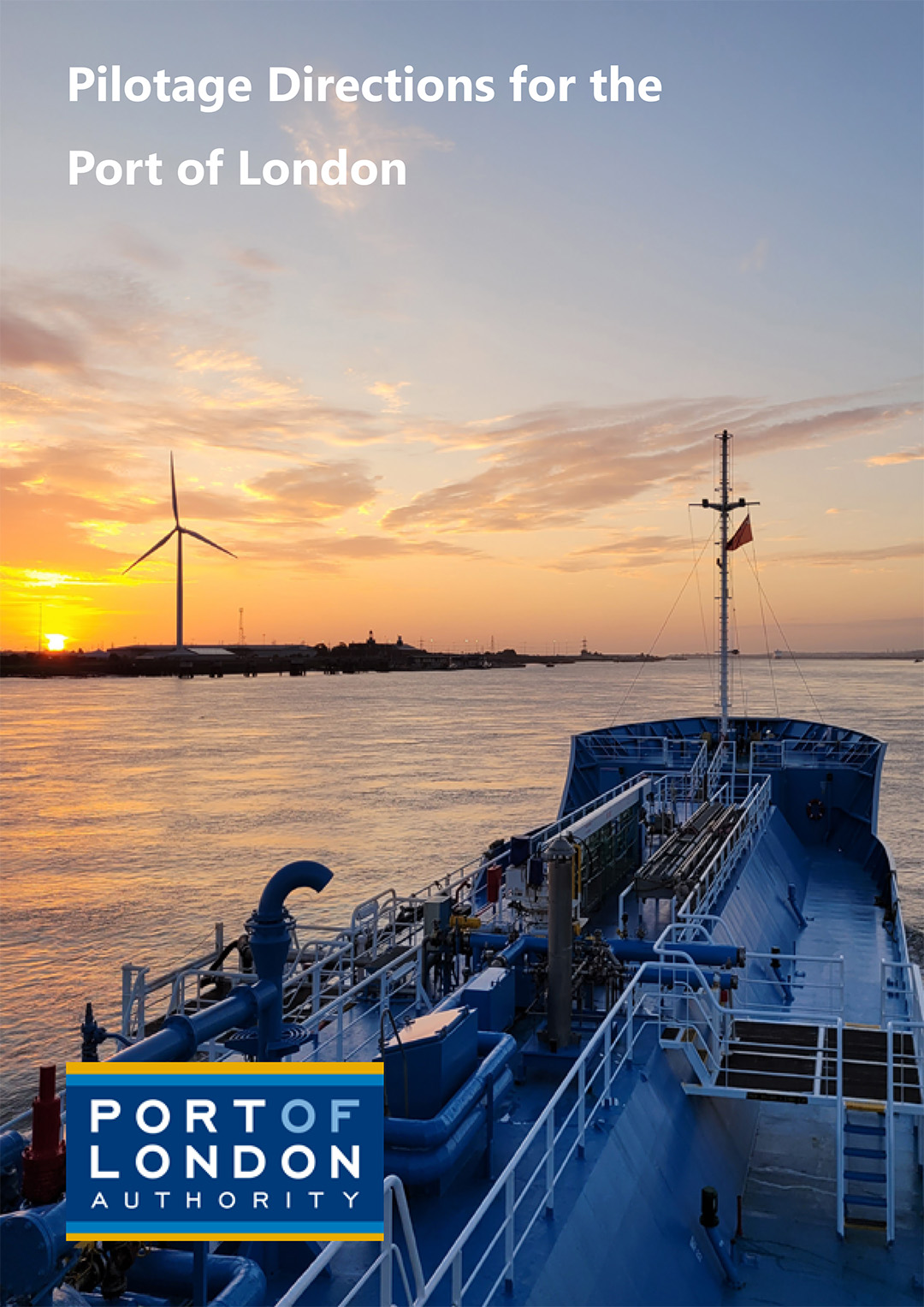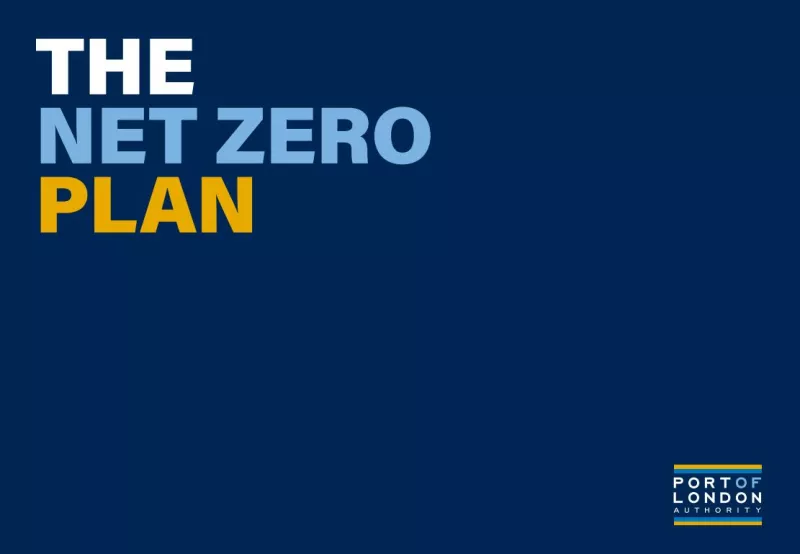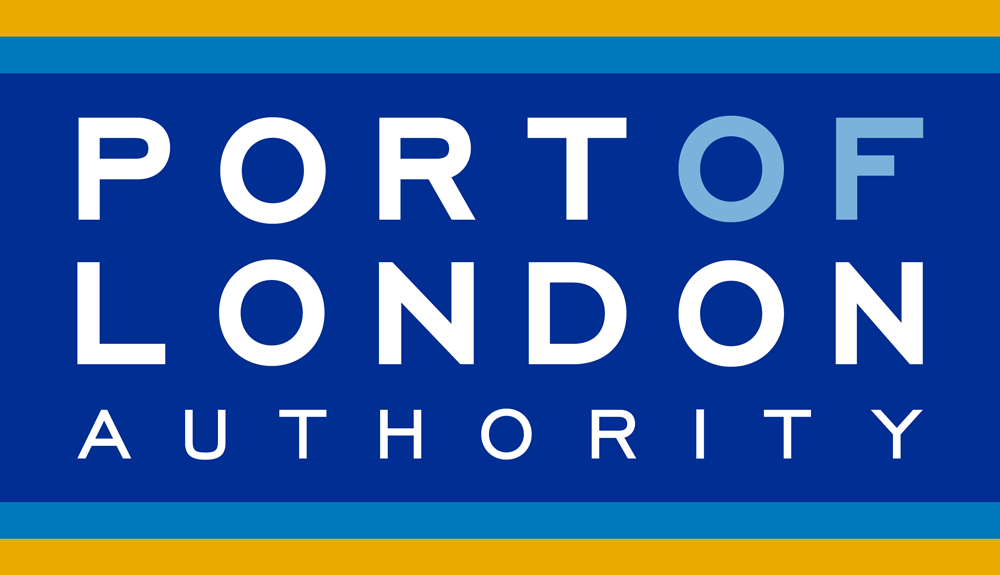Live Tides
NOTICES TO MARINERS
Charts & Surveys
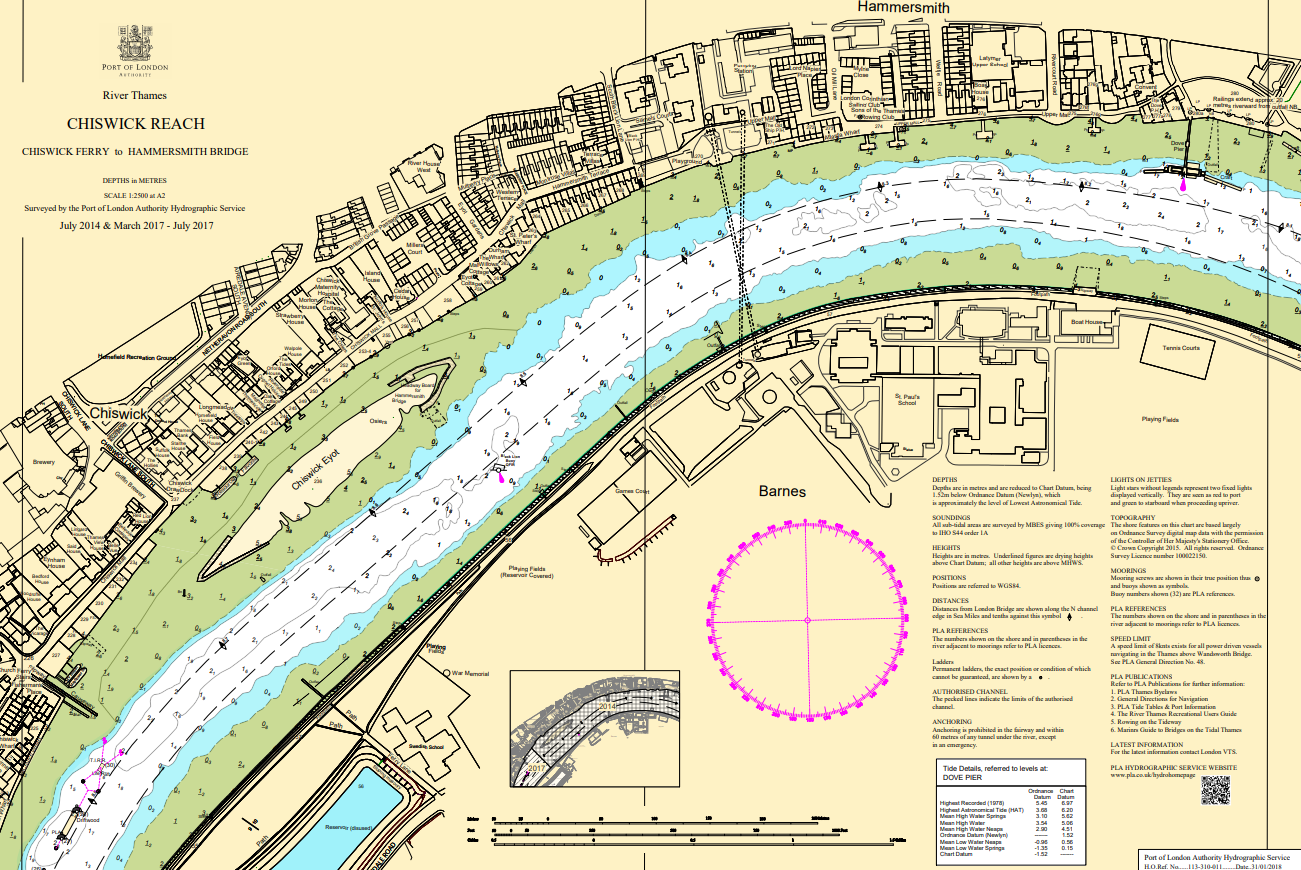
Incident reporting
Life-threatening emergencies on the river:
Call 999 and ask for the Coastguard
For near miss, safety observations and incident reporting click below
Pilotage Directions for the Port of London
Introduction
The Port of London Authority (PLA), as a Competent Harbour Authority within the meaning of the Pilotage Act 1987, and in the exercise of its powers under Section 7 of that Act, gives the following Pilotage Directions to the Masters of vessels in the London Pilotage District.
In order to maintain and enhance safety of navigation within the Thames, it is important that Masters and watchkeepers are aware of current Port of London Byelaws, Directions and Notices to Mariners. It is therefore vital that owners/agents ensure that all such relevant information and publications are promptly distributed to vessels.
It is the duty of the Master of a vessel to which a Pilotage Direction applies to comply with that Direction.
Failure by the Master of a vessel to comply with a Direction constitutes an offence, and renders that person liable, on conviction, to a fine up to level 5 on the standard scale. However, it is a defence for the Master of a vessel to prove that he had reasonable grounds for supposing that compliance with the Direction in question would be likely to imperil his vessel or that he had a reasonable excuse for his act or failure to act.
Notes to the Pilotage Directions
Notes accompany some Directions. Such notes are in italics and are included to explain the purpose of the Direction or to highlight changes in content and presentation from the last published Pilotage Directions (2017).
These notes are for information only and do not form part of the Pilotage Directions.
Regulations to the Pilotage Directions
Also published in this document are Regulations to the Pilotage Directions. These regulations define various administrative procedures and requirements, in particular those regarding the issue and renewal of Pilotage Exemption Certificates issued by the PLA from time to time, which are necessary to support and implement the Pilotage Directions.
These Regulations do not form part of the Directions.
VTS Records and Communications
Mariners are reminded that telephone calls, VHF radio traffic, CCTV and radar traffic images may be recorded in the VTS Centres at Gravesend and Woolwich.
1. COMMENCEMENT
These Pilotage Directions shall come into force on 1st October 2023 on which date, Pilotage Directions 2017 are revoked.
2. SHORT TITLE
These Directions may be cited as Pilotage Directions 2023 and are made by the Port of London Authority, a competent harbour authority within the meaning of the Pilotage Act 1987, in exercise of its powers under Section 7 of that Act.
3. DEFINITIONS AND INTERPRETATIONS
(1) In these Directions the following words and phrases have the following meanings (and related expressions shall be construed accordingly):
- “the Act” means the Port of London Act 1968 (as amended);
- “Certificated Person” means either a Pilot authorised by the PLA or PEC holder for the vessel.
- “Gravesend Pilot Station” means the boarding and landing area charted in position latitude 51° 26.9’N longitude 000° 22.5’E;
- “Harbour Master” means a person appointed by the PLA to be a Harbour Master and includes the deputies and assistants of a person so appointed, and Officers authorised to discharge the Harbour Master’s duties through one of the PLA’s VTS Centres;
- “IMO” means the International Maritime Organisation;
- “Length Overall” means the maximum length of a vessel, including overhanging structure, cargo or equipment, and if a Tug and Tow;
- If the object(s) towed is or are alongside the tug it is the maximum length of the longest object towed plus any overhanging structure, cargo or equipment extending beyond its bow or stern and only such part of the tug or its structure, cargo or equipment which extends beyond that.
- If the object(s) towed is or are pushed ahead of the tug or pulled behind the tug then it is the tug including overhanging structure, cargo or equipment and the maximum length of the longest object towed in each rank together with any overhanging structure, cargo or equipment which extends beyond its bow or stern, not including the towing medium.
- “LNG” means liquefied natural gas;
- “LPG” means liquefied petroleum gas;
- “London Pilotage District” means the area of the Thames from Putney Bridge and lines drawn from latitude 51° 37’N, longitude 00° 57.32’E (Foulness Point in the County of Essex) to latitude 51° 46.08’N, longitude 01° 20.53’E (Gunfleet Old Lighthouse), thence to latitude 51° 48’N, longitude 01° 40’E (Long Sand Head), thence to latitude 51° 36’N, longitude 01° 23.08’E thence to latitude 51° 26.6’N longitude 01° 25.5’E and thence to latitude 51° 24.92’N longitude 00° 54.35’E (Warden Point in the County of Kent) and locks giving access to docks;
- “Margaretness Limit” means a line drawn across the Thames from the Margaretness Light in a direction 334°T;
- “Marine Pollutants in Bulk” means products carried as cargo which are subject to The International Convention for the Prevention of Pollution from Ships 1973, as modified by the Protocol of 1978 relating thereto, better known as MARPOL 1973 - 78, as amended from time to time. In the context of these Directions “in Bulk” means marine pollutant carried as cargo in tanks which are a structural part of, or permanently attached to, the vessel. Residues of cargo remaining in cargo tanks following the complete discharge of the cargo are not included;
- “Master” in relation to a vessel, means any person (except a Pilot) having or taking the command, charge of management of a vessel, for the time being;
- “Medway Ports” means the area of jurisdiction of the Medway Port Authority;
- “North East Spit Pilot Station” means the boarding/landing area charted in position latitude 51° 24.87’N longitude 001° 29.9’E;
- “North East Goodwin Pilot Station” means the boarding/landing area charted in position latitude 51° 20.2’N longitude 001° 39´E.
- “Operating Draught” means the maximum draught of a vessel during its current passage, or movement within the London Pilotage District;
- “Passenger Vessel” means a vessel carrying more than 12 passengers;
“PEC” means a Pilotage Exemption Certificate granted under Section 8 of the Pilotage Act 1987;
Note: A PEC is only relevant to a vessel for which pilotage is compulsory.
- “Pilot” means a person authorised under Section 3 of the Pilotage Act 1987 to act as a Pilot for the relevant area within the London Pilotage District;
- “PLA” means Port of London Authority;
“Restricted Visibility” means all circumstances when visibility is less than 0.5 nautical miles;
Note: Within the London Pilotage District a Harbour Master or his designated Deputy may, using all available information, decide that Restricted Visibility pertains in a particular area or at a particular time or is likely to pertain and inform shipping as appropriate.
- “Sea Reach No.1 Pilot Station” means the Pilot landing area charted in position latitude 51° 29.3’N longitude 000° 52.70’E;
- “Specified Vessel” means any vessel having on board (including in its slop tanks) quantities of any of the following (IMO coding in brackets):
- Explosives (Class 1, excluding Class 1.4), in excess of 10 kg Net Explosive Quantity;
- LNG in bulk, LPG in bulk, or being non-gas free following discharge of these cargoes;
- Flammable liquids and substances in bulk or being non-gas free following discharge of these cargoes (Class 3 of flashpoint <23° C); or
- Toxic and corrosive substances in bulk or being non-gas free following discharge of these cargoes (Classes 6.1 and 8.0).
- “Sunk Pilot Station” means the boarding/landing area charted in position latitude 51° 51.45’N longitude 001° 40.43’ E;
- “Thames” means so much of the River Thames, the Thames Estuary, rivers, streams, creeks, watercourses and the sea as is within the port limits described in paragraph 2 of Schedule 1 to the Act;
- “Thames Barrier” means the flood prevention barrier which crosses the Thames in Woolwich Reach;
- “Thames Barrier Control Zone” means the area of the Thames between the Margaretness Limit and a line drawn due north from Blackwall Point;
- “Tongue Pilot Station” means the boarding/landing area charted in position latitude 51° 29’N longitude 001° 34.01’E;
- “Tug and Tow” means a tug or other vessel towing another vessel or vessels astern, alongside or pushing another vessel or vessels ahead;
- “UK Warship” means a warship as defined in the Merchant Shipping Acts;
- “Vegetable and/or Edible Oils” means oils derived from vegetable and animal sources;
- “Vessel” means a vessel as defined in the Act and in the context of these directions, includes Tugs and Tows;
- “VTS Centre” means the Vessel Traffic Service Centres at Gravesend (Port Control Centre) and Woolwich (Thames Barrier Navigation Centre) - Call Signs ‘London VTS’ and includes any other VTS control point through which a Harbour Master’s instructions and advice are issued to Masters of vessels by VHF radio and to which vessels report;
- “Warp Pilot Station” means the boarding area charted in position latitude 51° 29.75’N longitude 000° 55’E and the landing area charted in position latitude 51° 29.30’N longitude 000° 52.55’E.
(2) in these directions, unless the context otherwise requires:
- vegetable and edible oils are deemed to be Marine Pollutants;
- words implying the singular shall be construed as implying the plural and vice versa;
- The Direction headings do not form part of or affect the construction or interpretation of the Directions.
4. VESSELS SUBJECT TO COMPULSORY PILOTAGE
Subject to the exception in provided Direction 5, Pilotage is compulsory in the London Pilotage District for the following vessels, in the following areas:
(1) To the east of Sea Reach No.1 Buoy for vessels of:
- 90 metres or more in Length Overall;
- 50 metres or more in Length Overall which are:
- Specified Vessels,
- Passenger Vessels,
- Vessels carrying Marine Pollutants in Bulk, or
- Vessels with an Operating Draught of 6 metres or more; or
- 50 metres or more in Length Overall and with an Operating Draught of 5 metres or more when Restricted Visibility exists within that part of the London Pilotage District to the east of Sea Reach 1 Buoy where the vessel is planning to navigate.
(2) To the west of Sea Reach No.1 Buoy for vessels of:
- 80 metres or more in Length Overall;
- 50 metres or more in Length Overall which are:
- Specified Vessels,
- Passenger Vessels,
- Vessels carrying Marine Pollutants in Bulk, or
- Vessels with an Operating Draught of 5 metres or more; or
- 50 metres or more in Length Overall with an Operating Draught of 4 metres or more when Restricted Visibility exists within that part of the London Pilotage District to the West of Sea Reach No. 1 Buoy where the vessel is planning to navigate.
(3) To the west of the Margaretness Limit for vessels:
- of 40 metres or more in Length Overall; or
- With an Operating Draught of 4 metres or more.
Note: In the circumstances described in Direction 4(3) the Pilot is to be boarded at the Gravesend Pilot Station.
5. VESSELS EXCEPTED FROM COMPULSORY PILOTAGE
The following vessels, in the following areas, are excepted from compulsory pilotage under the provisions of Direction 4 above:
(1) UK Warships and vessels in the long-term service of HM Customs & Excise, Border Force and Trinity House in any part of the London Pilotage District.
Note: Vessels where the Master or watchkeepers are not familiar with navigating in the Thames are strongly recommended to employ the services of a Pilot.
(2) Such vessels engaged in activities such as dredging or maintaining navigation buoys and marks or the construction, maintenance or removal of offshore structures in the London Pilotage District, as the PLA may specify from time to time, subject to the requirements of the Harbour Master, and for such period as the PLA may specify.
(3) Vessels to the west of the Margaretness Limit of 40m or more in Length Overall or with an Operating Draught of 4 metres or more, as the PLA may specify from time to time, subject to the requirements of the Harbour Master, and for such period as the PLA may specify.
6. VESSELS WHICH MAY BE REQUIRED TO TAKE A PILOT
Any vessel which is not subject to compulsory pilotage may be required to take a pilot where:
- in the opinion of the Harbour Master it is affected in its ability to navigate due to damage to the vessel or a deficiency in her equipment.
- in the opinion of the Harbour Master the vessel requires a pilot in the interests of safety in the prevailing conditions.
7. MOVEMENT OF VESSELS SUBJECT TO COMPULSORY PILOTAGE
No vessel subject to compulsory pilotage shall be made underway for the purpose of shifting on a berth, changing a vessel from one berth, mooring or anchorage to another berth, mooring or anchorage, or of taking it into or out of any dock from or to another berth, mooring or anchorage, unless it is under the control of a Certificated Person.
8. USE OF AN ASSISTANT PILOT
The circumstances in which an authorised Pilot in charge of a vessel is to be accompanied by an assistant who is also an authorised Pilot, shall be determined by risk assessment following consultation with the Harbour Master; taking into account the size, characteristics or circumstances of the vessel, its equipment, cargo or crew, or the meteorological or tidal conditions.
9. BOARDING AND LANDING OF PILOTS
(1) Unless a vessel has a Pilot on board when entering the London Pilotage District, or is carrying a Pilot who is not disembarking when it leaves the London Pilotage District, Pilots shall normally be:
boarded or landed at the North East Spit Pilot Station by:
- All vessels entering from or leaving the London Pilotage District for the south or east, whose Operating Draught allows use of the Princes Channel, Fisherman’s Gat or the Long Sand Head; and
- All other vessels with an operating draught of less than 7.5 metres unless bound to or from ports in Essex or Suffolk.
Note: The North East Goodwin Pilot Station may be used as an alternative to the North East Spit Pilot Station, after discussion with the appropriate VTS Centre
- boarded or landed at the Sunk Pilot Station by:
- Vessels of 7.5 metres draught and more entering from or leaving for ports to the north and north east of the Thames;
- Vessels entering from or leaving for ports to the south and east of the Thames, which are unable to use the Princes Channel or Fisherman’s Gat because their operating draught is too great;
- Vessels of less than 7.5 metres draught, which agree to pay an additional pilotage charge for such service; and
- Vessels entering from or leaving for ports in Essex or Suffolk.
- boarded or landed at the Warp Pilot Station by:
- Vessels for which pilotage is compulsory only to the west of Sea Reach No. 1 Buoy.
- landed at Sea Reach No. 1 Pilot Station by:
- Outbound vessels only, for which pilotage is compulsory only to the west of Sea Reach No. 1 Buoy.
Boarded or landed at the Gravesend Pilot Station by:
- Vessels for which Pilotage is compulsory to the west of the Margaretness Limit.
Note: To ensure that Pilots with the correct authorisation are embarked it is from time to time necessary to change Pilots at the Gravesend Pilot Station, and for operational reasons, in Sea Reach.
(2) Subject to Pilotage Direction 8(1), any vessel boarding or landing a Pilot in the vicinity of the Sunk Light Vessel boarding and landing areas, which has an Operating Draught of less than 7.5 metres, will be surcharged.
(3) Vessels may be asked to use an alternative boarding or landing location in accordance with advice notified at the time by the appropriate VTS Centre.
10. ADJACENT PORTS
Vessels navigating through the London Pilotage District, to and from ports other than London, shall be subject to these Pilotage Directions whilst within the London Pilotage District.
Dated 01/10/2023
NOTES TO THE DIRECTIONS
A. Plans are included in the Appendices which illustrate:
- The Limits of the London Pilotage District.
- The position of Sea Reach No. 1 Buoy.
- The boundaries of the Thames Barrier Control Zone.
- The Pilot Boarding and Landing areas at:
- Sunk
- Tongue
- NE Goodwin
- NE Spit
- Warp
- Sea Reach No. 1 (Landing Only)
- Medway Buoy (Landing Only)
- Gravesend.
- Geographical Areas 1, 2, 2A, 3, 4 and 5, the Thames Barrier Control Zone & the Tilbury Lock and Approaches.
B. Medway Ports are empowered to authorise Medway Pilots and Medway Pilotage Exemption Holders to act in those approach areas to their port which lie within the London Pilotage District.
C. Crouch Harbour Authority are empowered to authorise Crouch Pilots to act on vessels up to 130m LOA and up to a 6.5m draft in the area specified in Appendix 3.
D. Vessels which under these Directions are not required to take a Pilot may nevertheless request the services of a Pilot. Such requests will be met as soon as possible subject to availability. Masters of vessels are encouraged to make use of this service where appropriate.
E. Vessels which do not normally require a Pilot as defined in Section 4 or not having a valid PEC Holder aboard may be directed to anchor and to await a Pilot in the event of Restricted Visibility. Vessel operators not wishing to incur such delays should consider requesting, in advance, the pilotage services as outlined in Note D above when Restricted Visibility is forecast or likely to occur.
REGULATIONS TO THE PILOTAGE DIRECTIONS
Unless the context otherwise requires the words and expressions used below which are defined in the Pilotage Directions 2023 shall have the same meanings as in the Pilotage Directions 2023. The definitions used in these Regulations follow those in the Pilotage Directions.
PEC’s have been split into two classes:
CLASS A refers to those vessels trading into and out of the Port of London. They will hereby be referred to as PEC (A).
CLASS B refers to intra-port vessels. They will hereby be referred to as PEC (B).
1. PILOTAGE EXEMPTION CERTIFICATES (PECS)
PEC (A)’s may be issued for use in the London Pilotage District, within a defined PEC area, or combination of areas, as described in Regulation 1.1 below. For locally trading vessels a PEC (B) may be issued for all or part of the area, as described in Regulation 1.2 below.
1.1 PEC (A) GEOGRAPHICAL AREAS (See Appendices 1 and 2)
PEC (A)’s will be restricted to that part of the London Pilotage District 0.5nm above a nominated berth (or river location), and shall exclude entry to the Thames Barrier Control Zone, and/or Barking Creek and/or Tilbury Lock and Approaches, unless the certificate has been issued with specific endorsements to permit entry to these zones. The PEC holder will only be permitted to manoeuvre to/from berths for which he/she has been examined and assessed.
The Geographical Areas relevant to the use of PEC (A)’s are as follows:
- AREA 1 - The area marked as Area 1 in Appendix 1, normally transited via Princes Channel and allowing access to the Mouse anchorage, Z9 - Z12 anchorages and the Warp Pilot Station.
- AREA 2 - The area marked as Area 2 in Appendix 1, normally transited via the East Swin Channel/Barrow Deep and Black Deep.
- AREA 2A - The area between the seaward limit of the London Pilotage District and Sea Reach No. 1 Buoy via the Fisherman’s Gat, the Knock John Channel, and the Knob Channel, marked Area 2A in Appendix 1.
- AREA 3 - The area between the Sea Reach No. 1 Buoy and a line drawn due north of the PLA Pilot Station at Gravesend, marked Area 3 in Appendix 1.
- AREA 4 - The area between a line drawn due north of the PLA Pilot Station at Gravesend, and a line drawn across the Thames from the Margaretness Light in a direction 334°T (the Margaretness Limit), but which includes Barking Creek, marked Area 4 in Appendix 2. AREA 5 - The area between a line drawn across the Thames from the Margaretness Light in a direction 334°T (the Margaretness Limit), and Putney Bridge, marked Area 5 in Appendix 2.
- AREA 5 - The area between a line drawn across the Thames from the Margaretness Light in a direction 334°T (the Margaretness Limit), and Putney Bridge, marked Area 5 in Appendix 2.
- TILBURY LOCK AND APPROACHES - The area of the Thames between Tilbury Lock eastern gates and 60 metres to the seaward of the Tilbury Lock sill.
- THAMES BARRIER CONTROL ZONE - The area of the Thames between the Margaretness Limit and a line drawn due north from Blackwall Point.
1.2 CLASS B PEC GEOGRAPHICAL AREA
PEC (B)’s will usually be restricted to that part of the area between Sea Reach 1 and a line drawn across the Thames from the Margaretness Light in a direction 334°T (the Margaretness Limit) for which the certificate has been issued, which shall be determined by assessment and examination, and shall exclude entry to Tilbury Lock and Approaches, unless the certificate has been issued with specific endorsements to permit entry to this zone. Applications for PEC (B)’s from the East of Sea Reach 1 to the outer port limits will be considered by the Harbour Master on a case-by-case basis.
The PEC (B) holder will only be permitted to manoeuvre to/from berths for which he/she has been examined and assessed.
1.3 CONTRACTUAL AGREEMENT
The PLA will seek a contractual agreement with the owner or operator of the vessel regarding the management of navigation on board the vessel and procedures relating to the use of PECs in the London Pilotage District.
Note: Appendix 5 shows a sample form of Agreement.
1.4 REGULATIONS FOR THE ISSUE OF A PEC
The following conditions must be satisfied before a PEC will be issued to a bona fide Deck Officer for any vessel:
- Applicants must hold a valid STCW certificate of competency or Inland Waterways qualification appropriate for the capacity in which they serve and valid for the vessel(s) in which the PEC will be used.
- Applicants must be capable of communicating effectively using the English language, by VHF radio.
- Applicants must complete the requisite number of trips, as detailed in Appendix 4, for the area applied for before undertaking the assessment and, if relevant, examination as specified below. These trips must be completed in the 12 months prior to the issuance of a PEC for that area.
- PEC applicants must notify the PLA of their intention to undertake qualifying trips in advance of starting the process by returning a completed application form an providing evidence of their qualifications and employment. No credit will be given for trips undertaken prior to this notification.
- In response to this notification the PLA will issue the applicant with a tripping number. The tripping number must be recorded against qualifying trips.
- PEC (A) applicants must attend an introductory course at the PLA, which provides them with details of the level of required pilotage knowledge, the scope of the examination and a visit to London VTS. It is recommended that an introduction session is attended for each PEC area. The courses are conducted by either a PLA Pilot Examiner or a senior Class 1 Unrestricted PLA Pilot. The introductory course is not mandatory for PEC B applicants, but attendance is strongly encouraged.
- Applicants for a PEC relating to a limited area, time period or activity will be considered against a dedicated risk assessment on a case-by-case basis. The requirements for tripping and examinations will normally be the same as if the whole area were being applied for.
Qualifying trips must only be undertaken by bona fide Deck Officers and should reflect a balance of inward and outward passages.
Note: “Deck Officer” in relation to a vessel, includes the Master and First Mate.
- A minimum of 50% of the qualifying trips for a PEC (A) shall be undertaken whilst understudying an authorised PLA Pilot.
- Qualifying trips must include passages made in darkness
- Applicants should complete their qualifying trips in the vessel for which the PEC will eventually be used, or one of a similar size and type. Exceptions to this requirement can only be made by prior agreement with the PLA. Subsequent examination and assessment will take any exceptions into account.
- Applicants must be present on the navigating bridge of the vessel throughout the duration of any passage which is to be claimed as a qualifying trip. Applicants must have understudied the PLA Pilot or PEC Holder and had effective responsibility for conduct of the vessel during the trip, under the direct supervision of the Pilot or PEC Holder.
- Applicants must report each qualifying trip to the appropriate VTS Centre immediately before, or, during the passage. Details of the trip should also be recorded in their tripping record, as supplied by the PLA. For PEC (A) applicants these details should be witnessed and countersigned by the PLA Pilot or PEC Holder present during the trip.
Applicants employed on the following vessels must undertake simulator training on the PLA simulator in addition to the normal requirements for a vessel of that size:
- LPG vessels;
- Vessels entering Tilbury Lock stern first on an ebb tide;
- Vessels of 2,500dwt and above transiting the Thames Barrier; and
- Vessels over 145m Length Overall.
Note: Simulation requirements will vary depending on the type / size of vessel. Details are available on request.
On completion of the required number of qualifying trips, applicants should submit their application using the predetermined forms, which will comprise:
- The applicant’s tripping log identifying all the qualifying trips undertaken, and in the case of PEC (A) applicants, each record properly countersigned by the PEC Holder or PLA Pilot present and showing the relevant PEC number or Pilot authorisation number. The PLA may verify these details by cross- referencing with VTS Centre records;
- a copy of the applicant’s Certificate of Competency;
- a copy of the applicant’s valid medical Certificate, and
- Signed copy of operation agreement.
Notes: 1. A translation certified by a Notary Public or equivalent may be required where the Certificate is not in English. 2. All documentation/copies must be of good quality and legible.
- For all vessels subject to compulsory pilotage, success in a theory examination and practical assessment for each PEC area is required prior to the issue of a PEC.
- In addition, all candidates attending a theory examination must submit a sample passage plan for the Area(s) in question.
Theory examinations will be conducted in the English language by a panel of PLA Officers, which includes a PLA Pilot Examiner, a Harbour Master and the Pilotage Manager or his representative. Post examination feedback is always available immediately following an examination.
Note: Examinations will be conducted on predetermined dates, for one PEC area at a time. Details are available on request.
- A practical assessment will be conducted by a PLA Pilot, on board a vessel of the size and type appropriate to the application, throughout the PEC area(s) for which the applicant has achieved a pass in the theory examination(s) within the last 6 months. For PEC (A)s this will take place on an inward passage only. The Pilot must be satisfied as to the relevant skills, experience and local knowledge of the applicant. The required number of trips must be completed prior to the practical assessment.
1.5 REGULATIONS FOR THE USE OF A PEC
- A PEC may only be used by a named individual acting in the capacity of a bona fide Deck Officer.
- A PEC may only be used on vessel(s) and berth(s) which have been nominated to the PLA in advance, and is subsequently named on that PEC.
- PEC Holders should have their certificate available for inspection at all times when in the London Pilotage District.
- Whenever a PEC (A) is being used within the London Pilotage District, the Holder, where safety permits, should make the required reports of his/her PEC usage to the appropriate VTS Centre personally, including the use of tugs.
- The Holder of a PEC having conduct of the navigation of the vessel for a particular area must be on the navigating bridge of that vessel throughout the passage in that area, unless relieved by another PEC Holder or Pilot.
- The appropriate VTS Centre must be apprised immediately of any change of watch between PEC (A) Holders, which takes place within the London Pilotage District.
- Where a PEC holder who does not hold a tug endorsement and requires tug assistance then the services of a PLA Pilot are required.
- A PEC remains valid for one year from the date of issue or renewal. It is the responsibility of the Holder to ensure that his/her PEC remains valid.
- A PEC will only remain valid while the Holder’s Certificate of Competency and Medical Certificate remain valid.
- The PLA reserves the right to inspect the supporting documents of a PEC Holder and/or relevant documents of the vessel in which the PEC is being used, or has been used, at any time.
1.6 REGULATIONS FOR THE ANNUAL RENEWAL OF A PEC
The following conditions must be met before a PEC is renewed:
- It shall be the responsibility of the PEC Holders to ensure that a fully completed application for renewal, on the official PLA-published forms, is received by the PLA no later than two weeks before the expiry date of the PEC.
- The PEC application must be accompanied by a record of PEC trips during the previous twelve months. For PEC (A)’s this should correspond to passages reported to a PLA VTS Centre, and will be checked for accuracy.
- The applicant for a PEC renewal must have completed a minimum of six PEC usages through each PEC area, part area, or endorsement in the 12 months prior to the renewal. Where this cannot be proven to the PLA’s satisfaction, the applicant will require reassessment.
- The applicant for a PEC renewal should have completed a minimum of two PEC usages at each berth specified on their PEC in the 12 months prior to renewal. Where this cannot be proven to the PLA’s satisfaction, the applicant may require reassessment at the discretion of the Harbour Master.
- The application must be accompanied by a copy of the applicant’s Certificate of Competency; and a copy of the applicant’s valid medical Certificate.
- The applicant must nominate the vessel(s) and berth(s) for which the PEC will be reissued.
1.7 REINSTATEMENT OF AN EXPIRED PEC
- The criteria for reinstatement of an expired PEC will, under normal circumstances, be as for a new application.
- If the applicant can show extenuating circumstances for a delay the PLA may, upon request from the applicant, consider an extension to the renewal deadline.
1.8 FIVE-YEARLY REVALIDATION - PRACTICAL ASSESSMENT PROCEDURE
- PECs are revalidated by practical assessment at five yearly intervals. For PEC Holders with more than one PEC Area, which may include Area 1 or 2, all Areas will be reassessed at the due date of the first PEC Area held, and this date will become the due date for the renewal/reassessment for all the PEC Areas held. PEC (A) assessments are only carried out on inward passages.
- In cases where a PEC Holder requires revalidation for Areas 1 and 2 - the outstanding Area will be practically assessed at the five-yearly due date for that Area.
- It shall be the responsibility of the PEC Holder to ensure that the PLA is contacted to schedule the assessment required in a) above, during the 12 months prior to the due date five-year revalidation. This assessment should be carried out as close to the renewal date as possible, within the 12 months prior to the renewal date.
1.9 MATERIAL CHANGES TO A PEC
- A PEC applies to nominated vessels and berth(s), upon which an examination and assessment is based. Where a new vessel nominated for inclusion on an existing PEC exceeds the dimensions of any vessel(s) for which the PEC was originally issued or has substantially different manoeuvring characteristics, or where otherwise deemed necessary by the Harbour Master, the PEC Holder must first undertake a minimum number of familiarisation trips accompanied by a PLA Pilot, onboard the nominated vessel (the number to be advised by the PLA), followed by a practical assessment.
- Applications for additional vessels / berths will be considered on a case-by-case basis. The PEC holder would normally be expected to complete 3 trips and then undergo a practical assessment with a PLA pilot.
- PEC applicants requesting vessel changes which are significantly different to existing vessels may be required to re-apply and complete the prescribed number of trips followed by examination and assessment.
- Where a PEC candidate is required to undertake trips prior to adding a vessel or berth, these trips must be completed in the 12 months prior to the addition.
- PECs will only be issued in respect of vessels currently trading in or expected to trade in, the London Pilotage District. In normal circumstances, exemptions may only be held for up to six vessels.
- Where the application is to add a vessel over 145m LOA, the PEC holder will be required to undertake simulation in accordance with Section 1.4(n). If the PEC holder has already attended an approved simulator training session this requirement may be removed at the discretion of the Harbour Master.
1.10 TUG ENDORSEMENTS
PEC (A) holders must hold a valid Tug Endorsement in order to utilise ship towage tugs as part of their PEC¹
The following conditions must be satisfied for the issue, renewal and revalidation of a Tug Endorsement.
- Prior to a practical assessment for the issue of a new Tug Endorsement, applicants must undertake:
- 4 trips with a Pilot whilst utilising tug/s for berthing or unberthing
- A trip on a ship towage tug
- Simulator training²
- Following completion of the above, a practical assessment must be undertaken which utilises ship towage tugs. This assessment may be carried out at the same time as the assessment trip for the PEC (A), and:
- Must be carried out on an inward passage only
- Must not be within one hour of high or low water.
- Tug endorsements are renewed annually at the annual renewal of the PEC (A). In order to renew a Tug Endorsement the applicant for a PEC renewal must have completed a minimum of 2 PEC (A) usages with tug/s since the last PEC (A) renewal.
- London VTS must be notified whenever tugs are utilised, both via PISCES and when reporting PEC usage upon arrival at Port Limits, in order for these to be recorded as qualifying trips for both new applications and renewals.
- Tug Endorsements are revalidated at the same time as the 5-yearly revalidation of the PEC (A). In order to revalidate the Tug Endorsement, a minimum of one day’s simulator training² must be undertaken, in addition to an on-board practical assessment, in line with the requirements of b) above, which should take place at the same time as the 5-yearly PEC (A) assessment.
The Harbour Master may authorise the use of tugs by a PEC (A) holder without a Tug Endorsement in emergency situations.
Note: 1. Authorisation for the use of tugs in an emergency situation, by a PEC (A) holder without a Tug Endorsement, may be given by London VTS on behalf of the Harbour Master.
2. Simulation training, carried out within the previous 12 months, which is not carried out in the PLA simulator, may be accepted at the discretion of the Harbour Master.
1.11 SUSPENSION OR REVOCATION OF A PEC / PEC (B)
The PLA may by written notice setting out its reasons suspend or revoke a PEC if one or more of the following situations arise:
- Where an event has occurred as a result of which the PLA is no longer satisfied that the Holder’s skill experience or local knowledge are sufficient for him or her to be capable of piloting the vessel of which he is a Deck Officer (or that and any other vessels specified in the certificate) within the London Pilotage District or such part of it as may be specified in the certificate;
- Where the PLA thinks that the Holder has provided false information to the PLA as to any of these matters;
- Where the PLA thinks that the Holder has been guilty of professional misconduct while piloting a vessel;
- Where a pilotage notification was given under section 15(4)(b) of the Pilotage Act 1987 in reliance on the person’s certificate and in the event the pilotage was carried out by a person who was neither an authorised pilot nor acting in accordance with a pilot exemption certificate nor if only local navigation was involved any other person certificated by the PLA to conduct Local Navigation in accordance with regulations contained in the Schedule to the General Directions for Navigation in the Port of London.
1.12 FAILURE OF A PRACTICAL ASSESSMENT
Failure of a practical assessment will result in immediate suspension of the PEC holder’s certificate.
Where a PEC Holder’s certificate is suspended or revoked because the Holder has failed a practical assessment, the PEC Holder must successfully complete a practical re-assessment before the suspension is lifted or a new PEC can be issued.
2. PROCEDURE FOR OBTAINING THE SERVICES OF A PILOT FOR THE LONDON PILOTAGE DISTRICT
2.1. NOTICE - General
The complexity of the scheduling of Pilots to vessels over such a large area as the Thames means that forward planning is vital to keep costs and delays to a minimum. It is therefore vital that sufficient notice is given of the requirement for the services of a PLA Pilot, as described below. Non compliance with the described ordering procedures may result in a delay to the vessel, or a surcharge; details of which can be found in the latest PLA Charges publication.
2.2. PROVISIONAL PILOT ORDERS
All vessels requiring the services of a PLA Pilot must make a PROVISIONAL ORDER to London Port Control Centre at Gravesend. This includes inbound vessels, outbound vessels leaving a berth, buoy, tier or anchorage, as well as those which are made underway in order to move from one berth, buoy, tier or anchorage to another, or moving from an anchorage.
This PROVISIONAL ORDER shall give a minimum of 24 hours advanced notice of the requirement for a Pilot. This is concurrent with the notice requirements of PLA General Direction No 7 - “Reporting vessel movements in the Thames”. In addition to these reporting requirements the following information is required:
- location at which the Pilot is required;
- vessel IMO number;
- gross tonnage(gt);
- Length Overall;
- operating draught;
- full manoeuvring speed;
- destination (name of berth or anchorage for an inward passage);
- destination (for an outward passage);
- date and time (as accurate as is possible) at which the Pilot is required; and
- all other reports and information required by the Merchant Shipping (Vessel Traffic Monitoring and Reporting Requirements) Regulations 2004 and the Dangerous Goods in Harbour Areas Regulations 2016.
This information must be provided through the PLA’s dedicated web-based ordering system - ‘PISCES’. (See Regulation 5.3)
In the event of any disruption to the PISCES system, e-mail orders will be accepted.
Vessels, for which PROVISIONAL ORDERS are not received, in accordance with the above procedure, will not be prioritised and will therefore risk incurring delay. It is good practice and advisable to also back up subsequent verbal changes with hard copy.
2.3 CONFIRMED PILOT ORDERS
Confirmation of the requirement for a PLA Pilot should be given to London Port Control Centre at Gravesend. This constitutes COMPULSORY NOTICE, and shorter notice than is set out below may attract a surcharge and may result in delay to the vessel.
A confirmed order will not be accepted without the draught of the vessel. Draught is a vital component of a confirmed order, as the PLA will use it to determine the class of the Pilot allocated to the vessel, and it will influence the planning of the passage. Failure to give an accurate confirmed draught, or to keep PLA informed of any subsequent changes, may result in a delay to the vessel, or a charge for cancelling and reallocating the Pilot.
NOTICE REQUIREMENTS
CONFIRMED PILOT ORDERS should be given in accordance with the following requirements:
Inward Bound Vessels
A CONFIRMED ORDER must be given in advance of the vessel’s ETA at the Pilot station, as follows:
- 8 hours from the Sunk Pilot Station.
- 6 hours from the NE Spit and Warp Pilot stations.
- 6 hours by vessels which are inward bound from any East coast port within the range of Great Yarmouth to Dover.
Outward Bound Vessels (and vessels which are made underway in order to move between berths or vessels moving from an anchorage other than in the Estuary):
A CONFIRMED ORDER must be given in advance of the vessel’s ETD, as follows:
- 6 hours if the vessel is proceeding beyond Sea Reach 1.
- 4 hours if the vessel only requires the services of a River Pilot as far as Gravesend or Sea Reach 1.
Vessels at anchor in the Estuary
Notice may by be given by vessels at anchor in the Estuary (bound for London or the Medway Ports) as follows:
- 8 hours by vessels which anchor in the general vicinity of the Sunk or are inward bound from any port adjacent to the northern and north-eastern limits of the London Pilotage District.
- 6 hours by vessels which anchor in the general vicinity of the Outer Tongue or Margate Roads.
- 4 hours by vessels proceeding from the inner London anchorages (Mouse, Southend and Warp Deep Water, Great Nore, Southend Lettered, Leigh Small Ships, Chapman, Mucking, Higham Bight and Gravesend Lower).
Reduced notice
The PLA will accept less notice without imposing a surcharge where it is not practicable to comply with the minimum notice requirements and in particular:
- Inward bound voyages to the limit of the London Pilotage District of less duration than the minimum notice requirement.
- Turnaround times for sailing from a London berth of less duration than the minimum notice requirement.
In these cases the PLA will accept the maximum possible notice where it has been given in good faith.
Short notice
The PLA regrets that it may not be possible to prioritise short notice orders, or if fulfilled they may incur a penalty as published in PLA Charges.
Variations once an order has been confirmed
Changing a pilot order at short notice once it has been confirmed may incur a penalty. For details of the required notice and the applicable penalties please refer to PLA Charges.
2.4 VESSELS ANCHORING IN THE LONDON PILOTAGE DISTRICT
Vessels required to anchor before proceeding to their destination must request from the appropriate VTS Centre by VHF radio, permission for the Pilot to remain on board until the vessel is required to get underway. No arrangements may be made in this respect with an individual Pilot.
Under normal circumstances when a vessel anchors for an extended period, the Pilot will remain on board for a maximum period of three hours before being relieved, to be replaced by another Pilot before the vessel leaves the anchorage.
Inward or outward bound vessels required to anchor and which have used the services of a Pilot must, as soon as is practicable, advise the appropriate VTS Centre by VHF radio of their ETA at the anchorage in order that arrangements can be made to land the Pilot. When a Pilot is required to make the vessel underway in order to move from the anchorage, the vessel must comply with the requirements of Regulation 2.3 and enter a new order for pilotage.
2.5 VESSELS REQUIRING PILOTS TO EMBARK AT CONTINENTAL PORTS
Vessel owners/agents wishing a PLA Pilot to board at a continental port should obtain the approval of the PLA Pilotage Administration office (see regulation (5)) not later than 3 days before the service is required. Shorter notice may be considered if pilotage resources allow. Should the services of a Pilot be cancelled within 2 days prior to the date that the Pilot is required to join the vessel at a continental port; a cancellation fee will be charged, plus any expenses already incurred.
Note: Port of London Pilots will only conduct pilotage within the normal operational area of the London Pilotage District and its approaches.
2.6 VESSELS OVERCARRYING PILOTS
The overcarrying of PLA Pilots will not be permitted except in the case of a safety critical situation or in exceptional circumstances. Where possible, the over carriage of a pilot is to be agreed with both the Pilot and the Port Authority. A vessel requiring a Pilot to remain on board a ship and proceed to a continental or distant UK port will be liable for a detention charge. Such charge will apply from the time that the pilot leaves the PLA pilotage district aboard the vessel to the time the pilot returns to the Gravesend pilot station.
All repatriation and arrangement costs are to be met by the vessel. All arrangements for hotel or transportation for Pilots should reflect the Pilot’s status as a senior marine professional. Where the Port Authority is notified by the Pilot that no return arrangements are in place, the PLA will first contact the London agent to request intervention.
Vessels over-carrying Pilots must provide suitable accommodation on board, in the form of a single, non-smoking cabin, and victuals and lifesaving equipment for the Pilot. No arrangements may be made with an individual Pilot.
A master of a ship who without reasonable excuse takes an authorised pilot without his consent beyond the point up to which he had been engaged to pilot the ship, shall be guilty of an offence under Section 19 of the Pilotage Act 1987 and liable on summary conviction to a fine not exceeding level 5 on the standard scale.
2.7 VESSELS REQUIRING PILOTS TO EMBARK OR DISEMBARK AT UK PORTS
Arrangements can be made for Pilots to embark or disembark at other UK ports subject to availability and adequate notice.
2.8 LARGER VESSELS – ENHANCED PILOT TRAINING
Tankers and gas carriers of 200m or more in Length Overall and/or 11m draught or more, and containerships of 320m or more in Length Overall and/or 13.5m draught or more are required to employ the services of a Pilot who has undertaken enhanced training relevant to this size of vessel. Risk assessment may determine that on occasion, vessels of this size take two Pilots, for which there will be an additional charge.
2.9 WELFARE OF PILOTS ONBOARD VESSELS
Vessels must provide the Pilot with a smoke-free environment both on the bridge and in the accommodation provided to an over-carried Pilot.
3. BOARDING AND LANDING INFORMATION FOR VESSELS BOUND TO OR FROM THE PORT OF LONDON
3.1 BOARDING AND LANDING
Masters are recommended to read and comply with the PLA Code of Practice for the Embarkation and Disembarkation of Pilots on the Thames. The good practice in the Code includes, but is not limited to, the following:
- Vessels intending to board or land a Pilot must establish good VHF communications with the Pilot boat prior to undertaking the transfer.
- A good lee should be provided by adjusting course and speed so that the Pilot transfer can be accomplished safely.
- Vessel Masters are reminded of their statutory obligations under international Pilot ladder regulations.
Note: PLA pilots may refuse to use any ladder which does not comply with the regulations.
3.2 PILOT BOATS
Pilot boats serving the London Pilotage District have a black or navy blue hull, orange or white superstructures and the word “PILOTS” on the side of the wheelhouse. They fly a Pilot flag by day and by night display the signals required by Rule 29 of the International Regulations for Preventing Collisions at Sea 1972 (as amended). See Regulation 5.2 for Pilot boat operating channels.
Pilot boats serving the North East Spit Pilot Station operate from Ramsgate. Pilot boats serving the Sunk Pilot Station operate from Harwich. Pilot boats serving the Warp and Sea Reach No. 1 Pilot Stations operate from Sheerness, and those serving the Gravesend Pilot Station, from Gravesend.
Pilot boarding or landing operations in the London Pilotage District, which are required outside the normal operational range of the PLA’s Pilot boats, may only be undertaken by a contractor whose vessel has been properly licensed to appropriate national standards, and certificated as a Pilot boat by the Competent Harbour Authority. Customers requiring a Pilot in these circumstances should ensure that provision for such a service is made well in advance of the requirement.
4.VESSELS INTENDING TO USE PECS OR CLAIMING EXCEPTED VESSEL STATUS
London Port Control Centre at Gravesend must be given a minimum of 24 hours advanced notice for vessels normally trading from outside the London Pilotage District:
- which are subject to compulsory pilotage and intend to employ a PEC holder whilst navigation through the district; or
- which would normally be subject to compulsory pilotage but are intending to navigate or undertake activities covered by Pilotage Direction 5(3) in circumstances which are excepted from compulsory pilotage.
Such notice must give the ETA/ETD (as appropriate), vessel name, gt, Length Overall, Operating Draught, name surname and forename(s) and, where appropriate the PEC number, of the bona fide Deck Officer who will be conducting the navigation of the vessel on that passage, or the reason it will be excepted from compulsory pilotage.
If this information is not provided, the vessel may be required to take the services of a PLA Pilot and this could involve the vessel in a delay as well as the imposition of a surcharge.
A vessel’s excepted status should be claimed and agreed more than 24 hours prior to port entry. The reasons for claiming excepted status should be made, in writing, to the PLA during office hours and not on public holidays.
5. COMMUNICATION WITH THE PILOTAGE AUTHORITY
5.1
PORT CONTROL CENTRE, GRAVESEND
Call Sign: London VTS
Location: Gravesend
Telephone +44(0)1474 560311 (3 lines)
Frequency: VHF Ch 68, 69, 18, 20
THAMES BARRIER NAVIGATION CENTRE, WOOLWICH
Call Sign: London VTS
Location: Woolwich
Telephone +44(0)208 8550315
Frequency: VHF Ch 14, 22, 09
5.2
PILOT STATIONS
NE Spit (Ramsgate)
Call Sign: NE Spit Pilots
Telephone +44(0)1843 583786
Frequency: VHF Ch 09
Sunk (Harwich)
Call Sign: Sunk Pilots
Telephone +44(0)1255 243111
Fax +44(0)1255 507177
Frequency: VHF Ch 09
Warp and Sea Reach No. 1 (Sheerness)
Call Sign: Sheerness Pilots
Telephone +44(0)1795 561207
Frequency: VHF Ch 69
Gravesend
Call Sign: London Pilots
Telephone +44(0)1474 560311
Fax +44(0)1474 352996
Frequency: VHF Ch 09
General Operational Enquiries E-mail: [email protected]
Pilotage Administration Office Port of London Authority
Location: London River House, Royal Pier Road, Gravesend, Kent DA12 2BG
Telephone +44(0)1474 562362
Fax +44(0)1474 562378
E-mail: [email protected]
5.3 PISCES
The PLA provides a secure web-based application (known as ‘PISCES’) to allow vessel’s agents to provide vessel arrival and departure notifications and request a PLA Pilot
PISCES has the functionality to guide the user, ensuring that information given is adequate for PLA purposes, and provides acknowledgment and feedback once this information has been submitted.
6. LIMITATION OF LIABILITY
The liability of the PLA for the provision of Pilots is subject to the following limitations:
6.1 ACTS OR OMISSIONS OF THE PLA
The provision of pilotage services by the PLA is subject to availability, and the PLA does not accept any responsibility for delay, damage or economic loss attributable to the non- availability of a suitably qualified Pilot.
In the event that a Pilot is not supplied due solely to the PLA’s negligence, then the PLA’s liability for any loss or damage directly attributable to the failure to provide a Pilot is limited to the amount which would have been charged for this service.
The PLA shall not be liable for any failure to provide a Pilot on time or at all due to unforeseen events, adverse weather, industrial action, a security incident, or any other cause outside the control of the PLA.
6.2 ACTS OR OMISSIONS OF PILOTS
Save as statutes imposing strict liability may otherwise provide, the PLA shall not be liable for loss or damage caused by the acts or omissions of its Pilots whether or not arising from negligence.
Note: Details of the charges and fees referred to in these Pilotage Directions and Regulations are published in the current PLA Charges Schedule.
Appendix 1
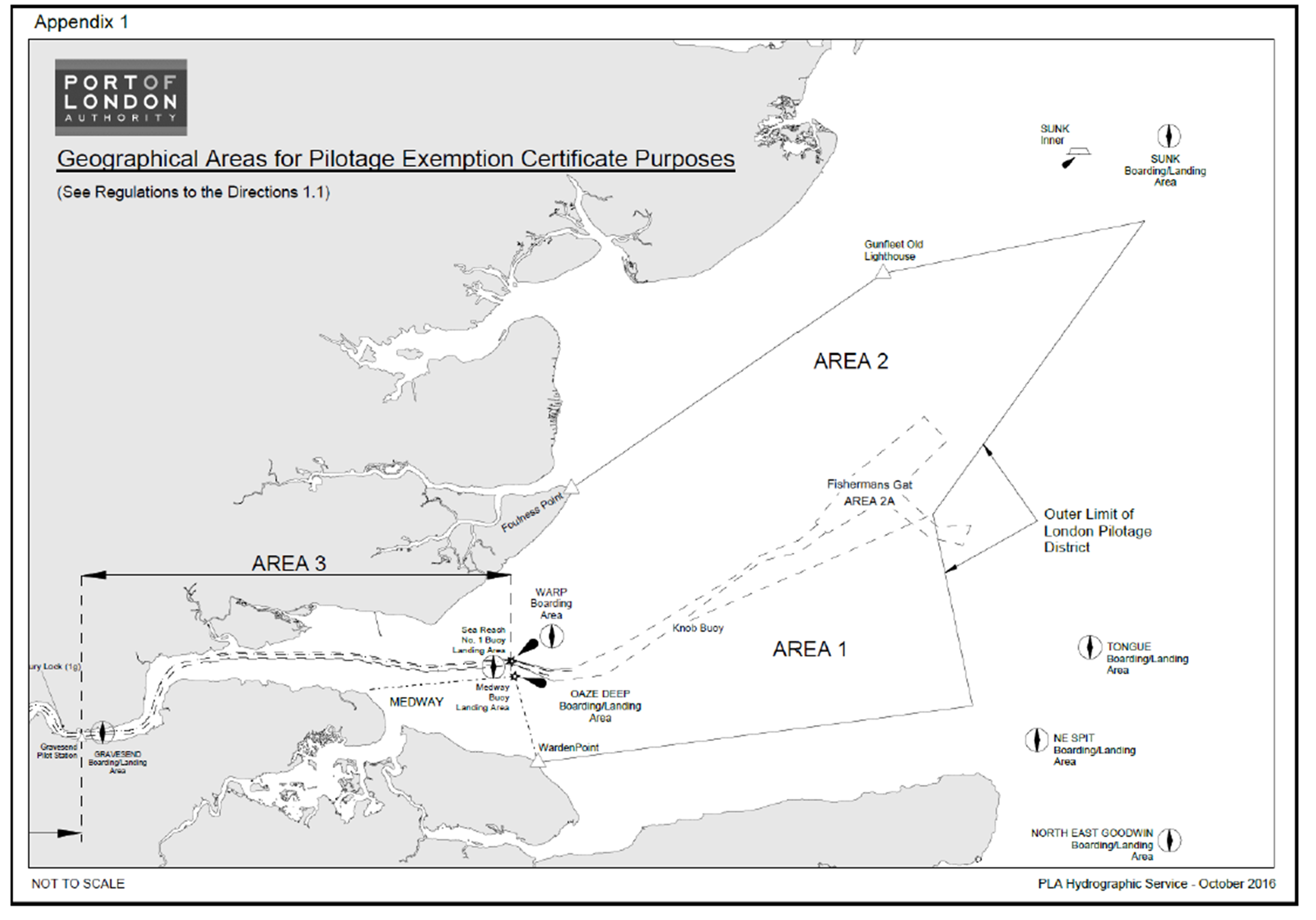
Appendix 2
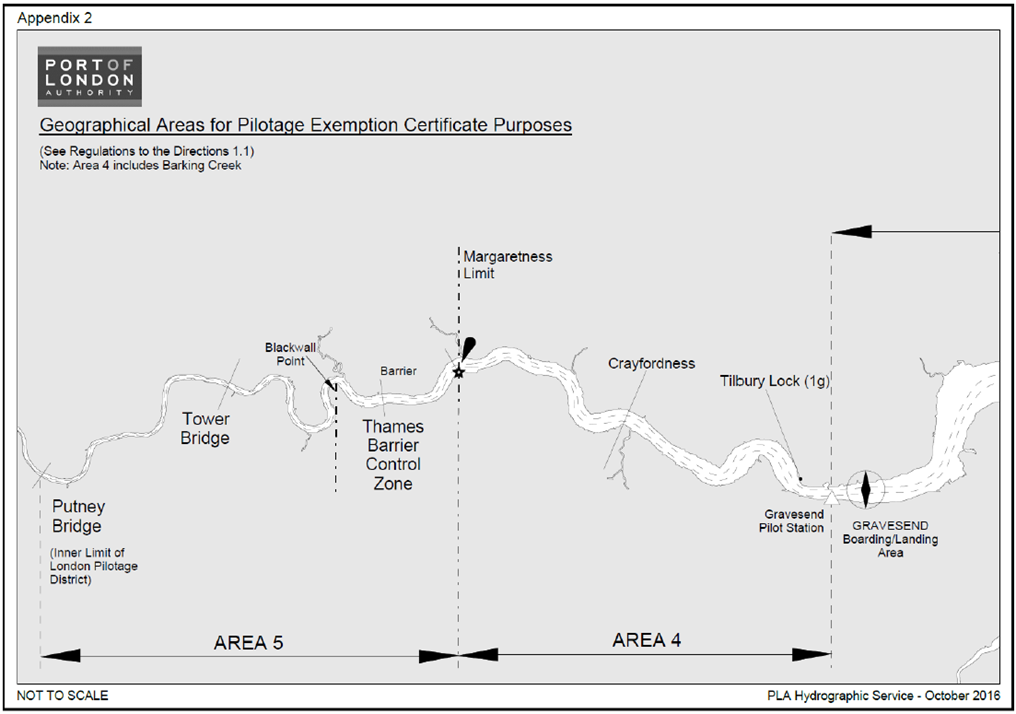
Appendix 3
Crouch Harbour Authority Pilotage District
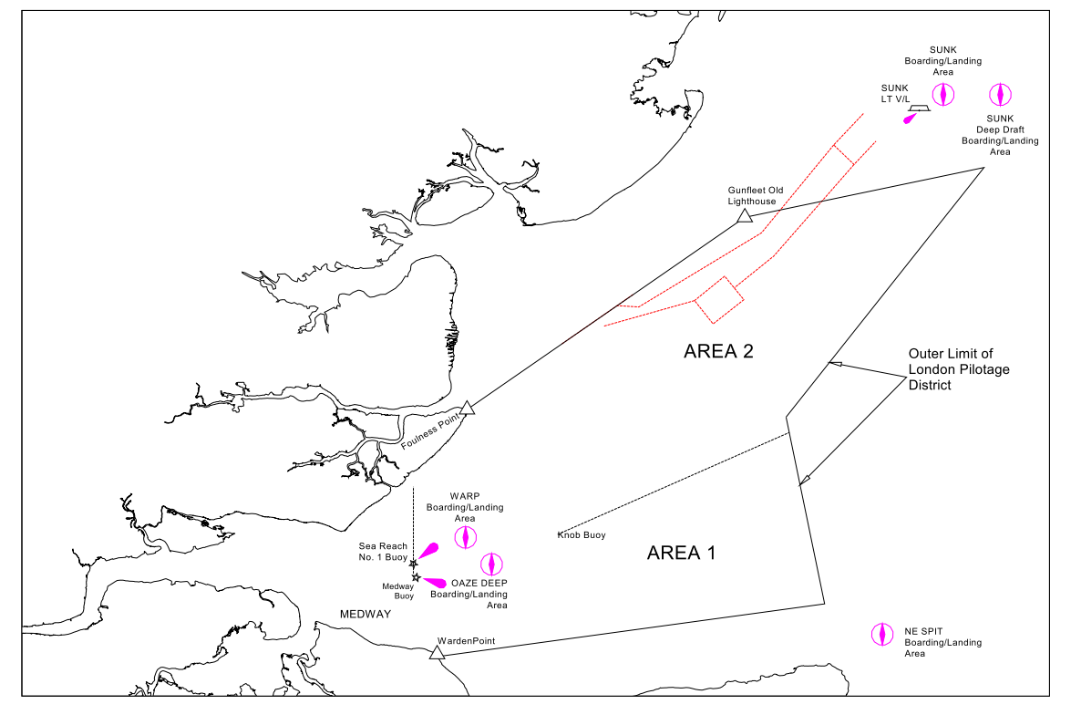

Appendix 3B
Summary of Compulsory Pilotage (Ref: Pilotage Direction No. 4)
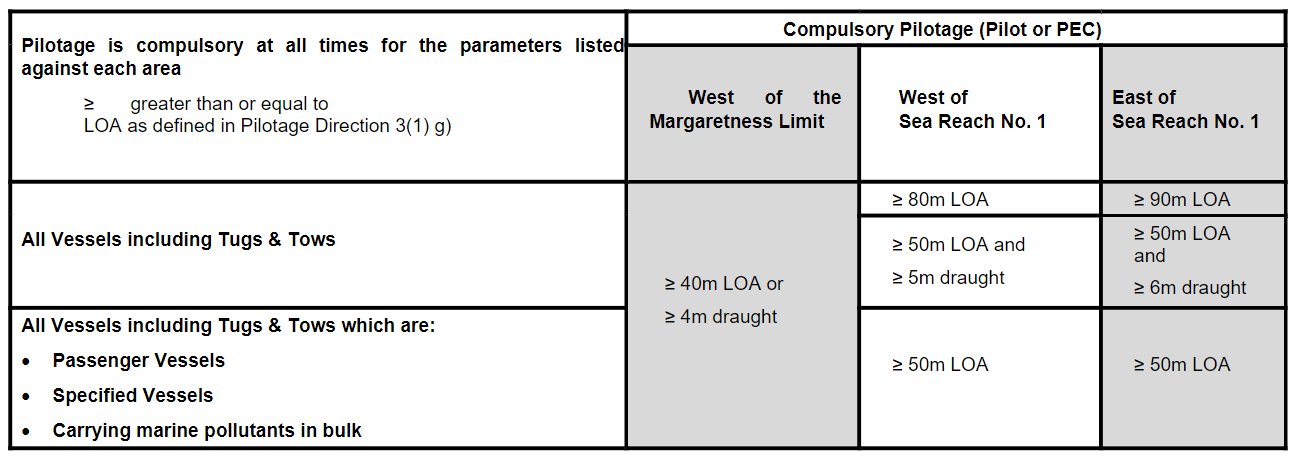

Note: Restricted Visibility: During periods of Restricted Visibility, Pilotage is compulsory for all vessels between 50m LOA and 90m LOA with an Operating Draught ≥ 4m (≥ 5 metres East of Sea Reach No.1).
Appendix 4
SUMMARY OF THE QUALIFICATION REQUIREMENTS FOR PILOTAGE EXEMPTION CERTIFICATES
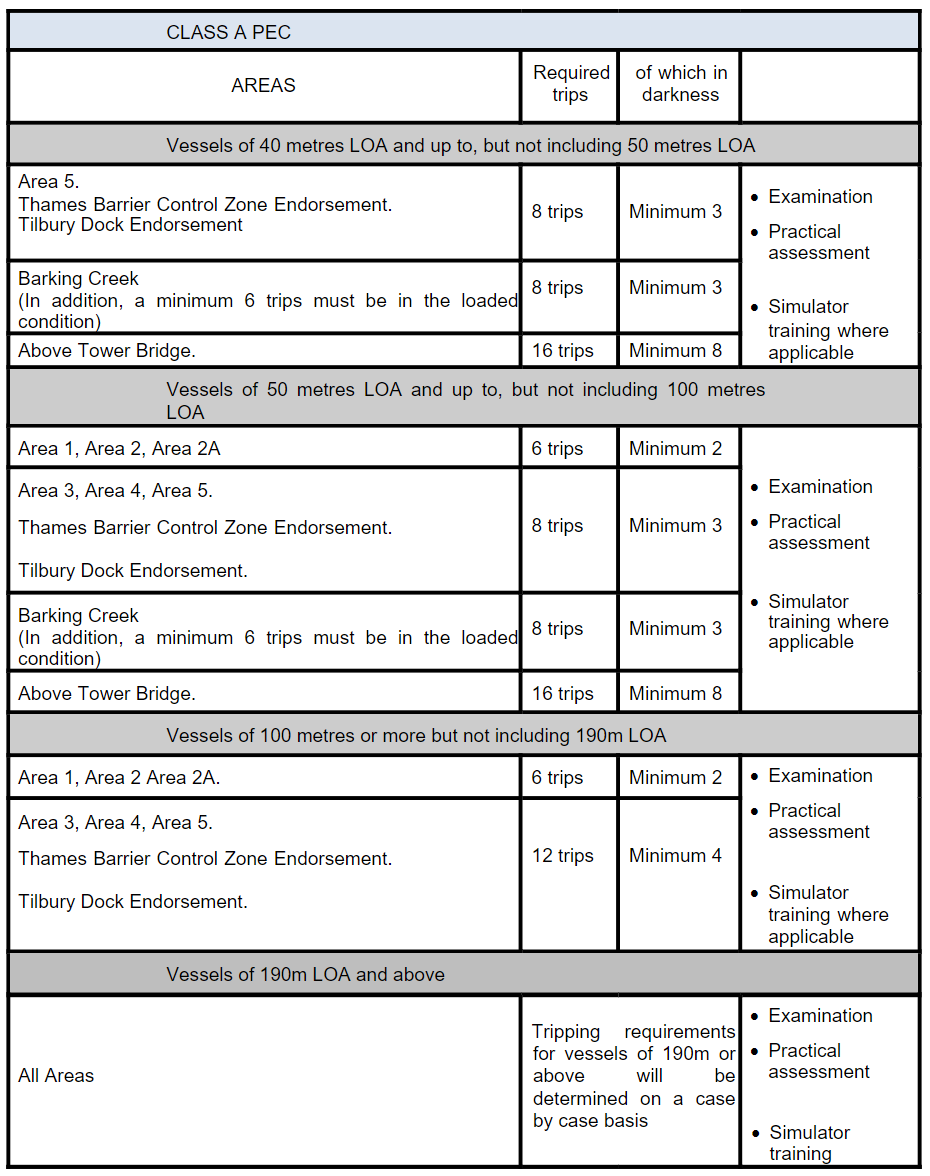



Notes:
1. Tables above to be read in conjunction with Regulation 1.4.
2. No PECs will be issued for vessels over 100m LOA using Barking Creek.
3. Additional trips may be required, depending on the size/nature of the vessel, as determined by risk assessment and confirmed by the Harbour Master.
4. The required trips do not include the practical assessment.
Appendix 5
AGREEMENT BETWEEN THE PORT OF LONDON AUTHORITY AND VESSEL OPERATORS OPERATIONS INVOLVING USE OF PILOTAGE EXEMPTION CERTIFICATES
1. SAFETY OF OPERATIONS
- As part of the agreement, the Port of London Authority will ensure the ready availability, on its web site (www.pla.co.uk), of all up-to-date Navigational and Regulatory Information regarding navigation, within the Port of London Pilotage District. Hard copy may also be provided on request.
- Operators will agree to disseminate the information referred to in (a) to their Deck Officers who hold PLA Pilotage Exemption Certificates (PECs) without delay.
- While piloting their ships within the London Pilotage District the Operators will ensure that all PEC Holders have valid Certificates of Competency appropriate to their rank and the size of vessel on which they are serving and valid medical certificates.
- That only PEC Holders actually signed on to the ship’s articles as Deck Officers will be employed to Pilot the ship for which the PEC applies within the London Pilotage District.
- Operators will ensure that arrangements are in place whereby holders of PECs will be properly rested prior to commencing any act of pilotage within the London Pilotage District.
- Operators will notify the PLA promptly if any PEC Holder is directly involved in any navigational incident while using their PEC, and accept that the use of such PECs will be considered for suspension until the matter has been investigated by the PLA and their report completed. The PLA undertake that such investigation will take place as soon as possible after the incident.
- Any PEC Holder who fails a test administered under either the PLA’s or Operators’ Drug and Alcohol Policy, or is convicted of any offence involving drugs or drink, will not be permitted by the Operator to use the PEC until investigation and internal disciplinary process, or due process of law has been concluded.
- All PEC Holders will be in possession of and have available at all times, the appropriate Port of London Byelaws, Pilotage Directions, General Directions and the PLA’s Code of Practice for Ship Towage Operations on the Thames.
2. PROCEDURES
- The operators will notify the PLA of any relevant change to the status or category of the ship, such as: from “non-specified and hazardous” to “specified and hazardous and marine pollutant” for ships of between 50 and 100 metres in length prior to visiting the port.
- Operators will nominate a responsible officer within their organisation fully authorised to deal with matters relating to the use and administration of PECs, held by their Deck Officers.
- Operators will notify the PLA of the name and address of the Company which is legally responsible for the operation of the ships in their fleet and the name of the Protection and Indemnity organisation in which the ship is entered for P&I risks.
- The Operator will ensure that pilotage, and the use of PECs, will form part of the ISM procedures in place for ships navigating within the London Pilotage District. The operator further agrees to participate in and contribute to the PLA Navigational Safety Management System.
- The Operator undertakes that its contracts of employment will only require properly qualified personnel who are willing to hold a PEC and who have a good command of the English Language to apply for a PEC.
Appendix 6
LIMITATIONS FOR THE ISSUE OF AN EXCEPTION FROM PILOTAGE FOR VESSELS NAVIGATING ABOVE MARGARETNESS
1. Definitions
Length of Object Towed – means the maximum overall length of each object towed including overhanging cargo or equipment, but disregarding the towing medium.
Beam Overall – means the maximum overall beam of a vessel or combination of vessels within a Tug and Tow, including overhanging structure, cargo or equipment.
2. Introduction
This Annex provides details of the exceptions available under Pilotage Direction 5(3) for vessels to be excepted from the requirements of the Pilotage Directions when navigating to the West of the Margaretness Limit.
This exception does not apply to ‘Non-Routine’ tows where the length of object towed exceeds 50m or to passenger vessels exceeding 65m length overall.
3. Vessels Excepted from Pilotage
The following tables provide the maximum vessels dimensions that may be excepted from PLA Pilotage Directions under Direction 5(3) when navigating above Margaretness.
Table 1 - Pilotage Requirements for Tugs engaged in Pushing Vessels ahead and Single Vessels
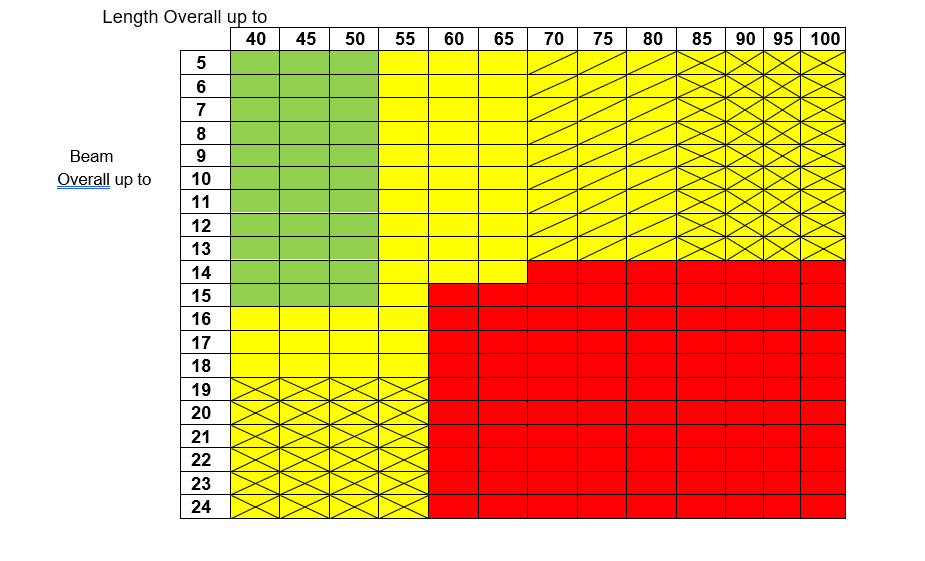

Table 2 - Pilotage Requirements for Tugs with Vessels Towed Alongside
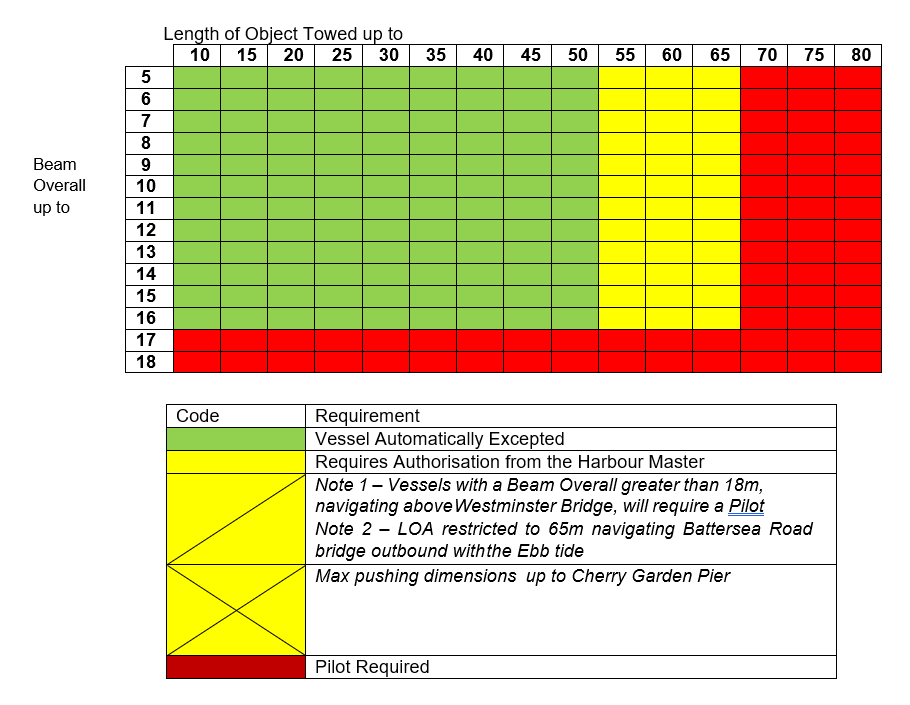

Table 3 - Pilotage Requirements for Tugs with Vessels Towed Astern
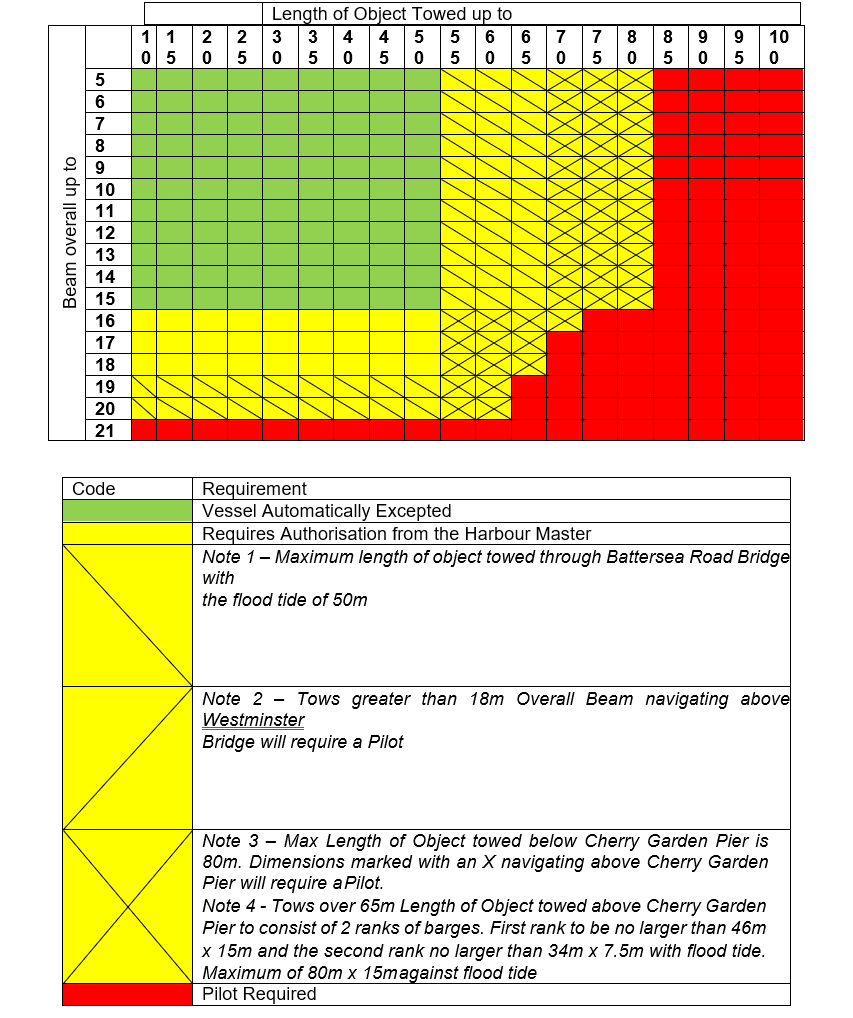

4. Vessels Automatically Excepted
Vessels identified within the above tables as having ‘No Pilotage Requirement’ are excepted from the Pilotage Directions when the bona fide Master holds a valid Thames Local Knowledge Endorsement (LKE) issued by either the PLA or MCA. Total Draft & Air Draft for any combination within this category is not to exceed 8.5m (e.g. 1.5m Draft and 7m Air Draft) when navigating above Tower Bridge.
5. Vessels requiring Authorisation from the Harbour Master
Vessels identified as requiring authorisation from the Harbour Master may be considered for exception from the requirements of the Pilotage Directions, but must provide evidence they meet the following criteria before authorisation will be issued:
- The bona fide Master must hold a valid Thames LKE issued by the PLA or MCA.
- The company must have a dedicated and audited training and assessment procedure in place to attain the Master’s position.
- The company has an approved passage plan and navigational risk assessment for the operation, as required by the PLA’s General Directions
- The vessel meets the manoeuvrability and visibility requirements required by the PLA, as detailed in the Code of Practice for Craft Towage Operations on the tidal Thames, or existing safe history of operation as determined by the Harbour Master
6. Review of Documentation
Where a company wishes to operate, or is currently operating under this exception, the Harbour Master shall be provided with any information he may request in respect of, but not limited to, the vessel, its equipment, certification, organisational and vessel management systems and crew competency such that a full assessment can be made.
7. Revocation
The Harbour Master reserves the right to suspend or revoke any exception if it appears the above requirements have not been met or if a vessel has been involved in an incident in which the safety of navigation may has been compromised.
Discover
